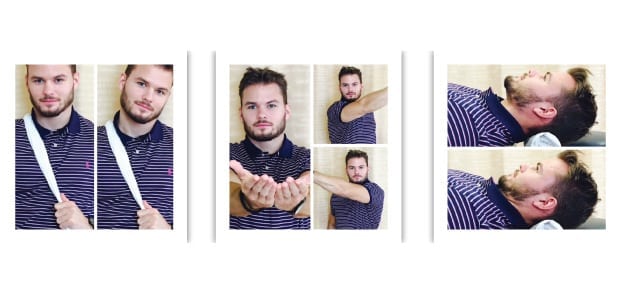Jeffrey Foucrier
PT, DPT, OCS, CMTPT
Spooner Physical Therapy
Insidious and blunting: the two words I would use to describe headaches. If we look at the most disabling disorders in the world, the World Health Organization (WHO) would rank headaches in the top ten (top five for women) with a staggering global prevalence of 47%.1,2,3 Of these headaches, studies indicate that tension-type headaches (TTHs) are the most debilitating, with a lifetime prevalence that ranges as high as 78%.1,4,5,6 If headaches weren’t bad enough, it’s been reported that individuals with TTHs have an extremely high prevalence of neck pain; approximately 89%.2 What’s the connection, and could this be ‘key’ in finding effective non-pharmaceutical treatments to manage headaches?
The tension-type headache can be described as ‘general head pain.’ Symptoms could present on both sides of the head and are commonly not affected by physical activity.7 However, it is distinguished from other primary types of headaches, like migraines, in that it shouldn’t cause you severe nausea, vomiting and/or an aura.7 The actual cause(s) of tension-type headaches are unknown, but it is thought to be primarily neurological in nature.3,5,6 This isn’t to say that TTHs aren’t affected by other factors such as musculoskeletal dysfunction, psychological stress and genetic predisposition.3,5,6 With the extremely high prevalence of neck pain in an individual with TTHs (remember the 89%?), treatment of these musculoskeletal factors, in addition to more traditional methods of treatment, may offer a more comprehensive approach to care.
The customary management of TTHs has primarily relied on pharmaceuticals,6 but there is a growing body of evidence which shows that non-drug therapies, including treatment of muscle tissue, can be just as effective in the reduction of headache frequency, intensity and duration.8,9,10 Furthermore, the uses of similar therapeutic strategies have also been very successful in the management of neck pain.11 Having a professional that appreciates this relationship is pivotal in restoring function and giving you your life back.
Headaches are multi-factorial in nature and are greatly under-appreciated both in scope and treatment. By working with your primary-care-provider and pursuing ‘active’ treatment of your neck, I believe that you can better manage your headaches. Physical therapy is one such avenue that can help decrease this disabling disorder.
I have added a few exercises that may help you better manage one of the greatest ‘pains in the neck,’ tension-type headaches.
Here’s to Your Health in Motion!
Reference List:
1. Sovner, LG et al. “The global burden of headache: a documentation of headache prevalence and disability worldwide.” Cephalgia 2007; 27: 193-210. Print.
2. Ashina, Sait et al. “Prevalence of neck pain in migraine and tension-type headache: A population study.” Cephalgia 2015; 35: 211-219.
3. Jension, Rigmor and Stovner, Lars. “Epidmiology and comorbidity of headache.” Lancet Neuro 2008; 7:354-371.
4. France, Stacey et al. “Evidence for the use of dry needling and physiotherapy in the management of cervicogenic or tension-type headache: A systematic review.” Cephalgia 2014; 34: 994-1003. Print.
5. Lodar, Elizabeth and Rizzoli, Paul. “Tension-type headache.” BMJ 2008; 336: 88-92. Print.
6. Fumal, Amaud and Schoenen, Jean. “Tension-type headache: current research and clinical management.” Lancet Neuro 2008; 7: 70-83.
7. Lipton, R.B. et al. “Classification of primary headaches.” Neurology 2004; 63: 427-435. Print.
8. Ghanbari, Ali et al. “The effect of trigger point management by positional release therapy on tension type headache.” NeuroRehabilitation 2012; 30: 333-339. Print.
9. Fernandez-de-las-Penas et al. “Myofascial Trigger Points and Their Relationship to Headache Clinical Parameters in Chronic Tension-Type-Headache.” Headache Sept. 2006: 1264-1272. Print.
10. Mesa-Jimenez, Juan A. et al. “Multimodal manual therapy vs. pharmacological care for management of tension type headache: A meta-analysis of randomized trials.” Cephalgia 2015: 1-10. Print.
11. Bertozzi, Lucia et al. “Effect of Therapeutic Exercise on Pain and Disability in the Management of Chronic Nonspecific Neck Pain: Systematic Review and Meta-Analysis of Randomized Trials.” Physical Therapy Aug. 2013; 93: 1026-1036.









